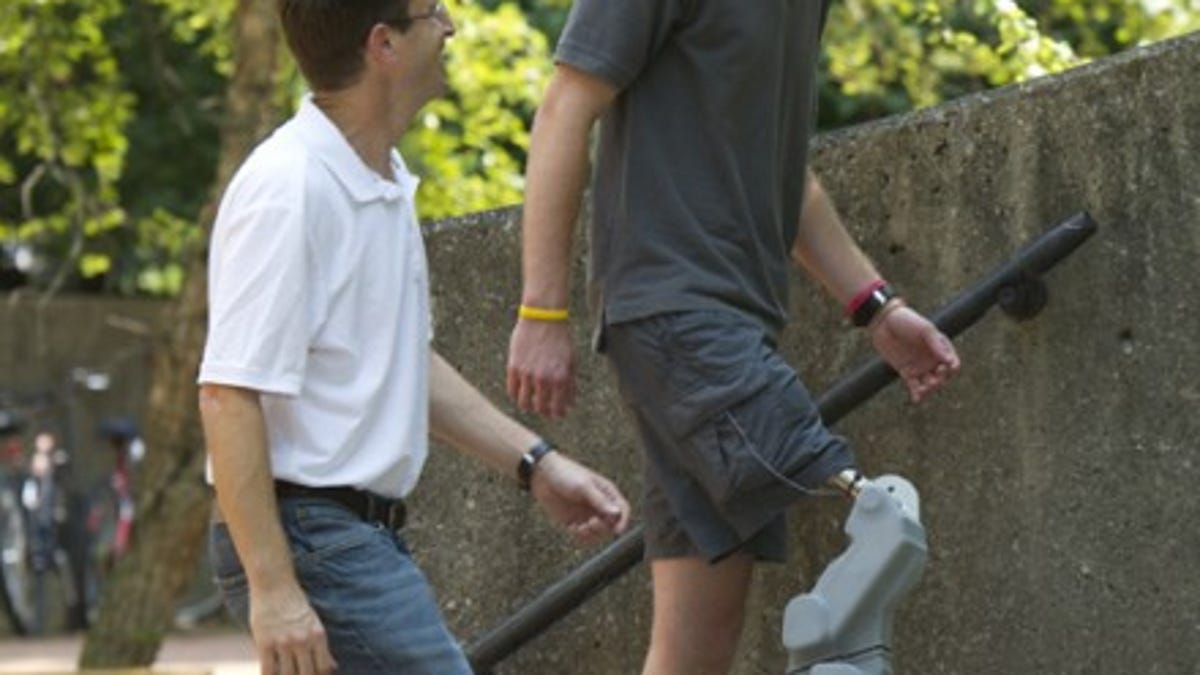New bionic limb features powered knee/ankle joints
Lower-limb prosthetic, in development at Vanderbilt for seven years, uses computer, sensor, electric motor, and battery tech to power knee and ankle joints that operate in unison.
A passive prosthetic leg, says 23-year-old amputee Craig Hutto, is always a step behind. But a new leg built by researchers at Vanderbilt University "is only a split-second behind."
Hutto, who is 6 feet 4 inches, has been testing the bionic leg for a good chunk of the seven-year research project at the school's Center for Intelligent Mechatronics. (Check out his crazy story about how a shark nearly tore off his leg when he was fishing in Florida at age 16.)
What sets the Vanderbilt leg apart from its predecessors is its use of recent advances in computer, sensor, electric motor, and battery tech to enable the prosthetic to be the first ever that powers knee and ankle joints in unison.
"We have validated our hypothesis that the right technology was available to make a lower-limb prosthetic with powered knee and ankle joints," says research head Michael Goldfarb, a professor of mechanical engineering, in a news release. "Our device illustrates the progress we are making in integrating man and machine."
The device weighs in at 9 pounds, which is actually less than most human lower legs. On one charge, it can operate at normal levels of activity for roughly three days. And it features an "anti-stumble" routine; if the leg senses that its user is starting to stumble, the leg lifts to avoid obstruction and plants on the floor to optimize balance.
The device was ultimately designed to make it easier for an amputee to stand, sit, walk, and use stairs and ramps, and it requires 30 to 40 percent less of the user's own energy to operate.
Goldfarb says the biggest challenge, after getting the leg's weight and operating volume down, was developing the control system:
As you add greater capability, you are also adding greater liability. Not only does the controller have to perform individual operations reliably, but it has to perform several operations at the same time and not get confused.
The Center is also working on an advanced prosthetic arm, and has already patented key aspects of this lower limb prosthetic, granting exclusive rights to prosthetic manufacturer Freedom Innovations to develop and manufacture the device.
Check out video of the prosthetic in action here. You'll see--or rather hear--what Goldfarb is talking about when he mentions operating volume.


